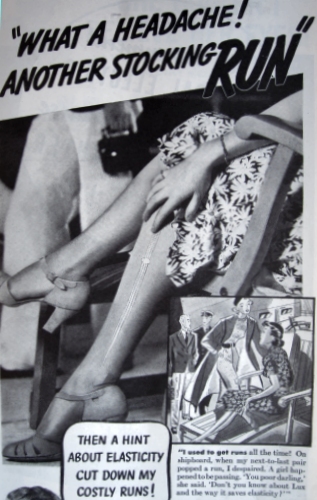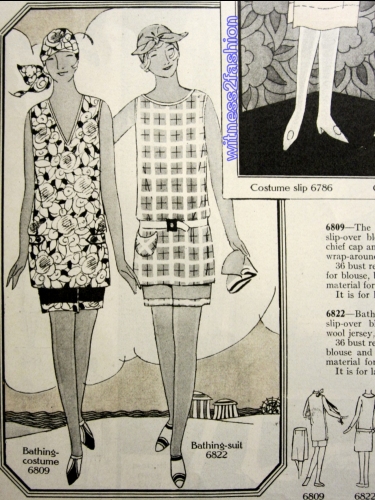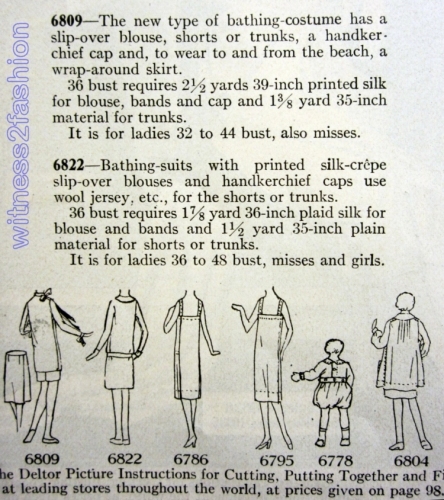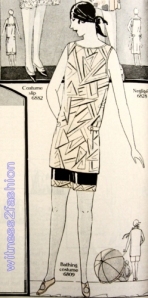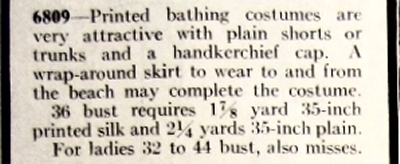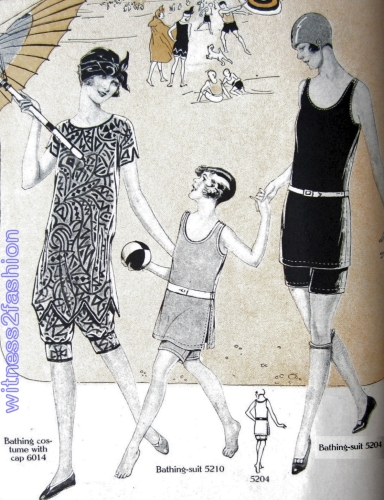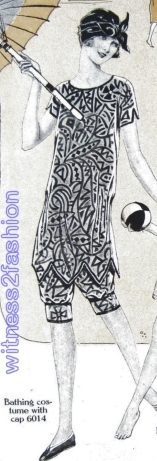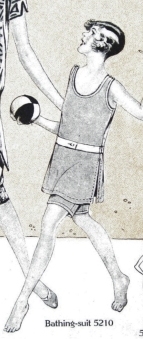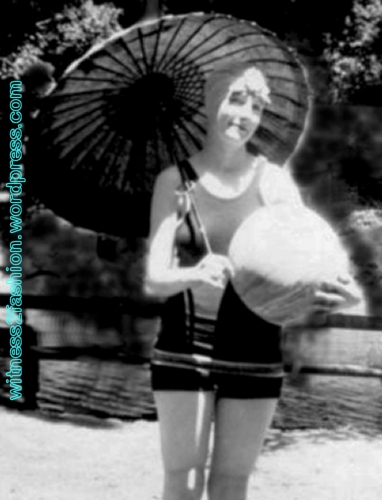It wasn’t till Lynn at americanagefashion.com asked how 1920s roll-on garters worked that I realized many women have never worn stockings, much less rolled garters or garter belts. So I’ll repeat some of my reply, this time with lots of illustrations.
My grandmother still wore 1920s style garters (click link for image) in the 1950s, when she was in her 70s. The rubber of the garter was tube-shaped, covered in pinkish-tan (knit?) fabric, and sealed into a ring shape with a tubular metal crimp. What this kind of garter — utterly un-sexy, nothing like a flat, lacy wedding garter — did to the circulation in women’s legs, I don’t want to think about.
Grandma rolled the ring-type garter up to the top of the stocking, and then rolled stocking and garter, as one, down to a point above or below her knee. The stocking rolled itself around the garter and created a ridge or bump, but this technique saved women from the runs you can get when you kneel while wearing stocking suspenders attached to the corset and clasped onto the stocking. (Rolled stockings also allowed women the comfort of not wearing a girdle….)
Suspender Style Garters
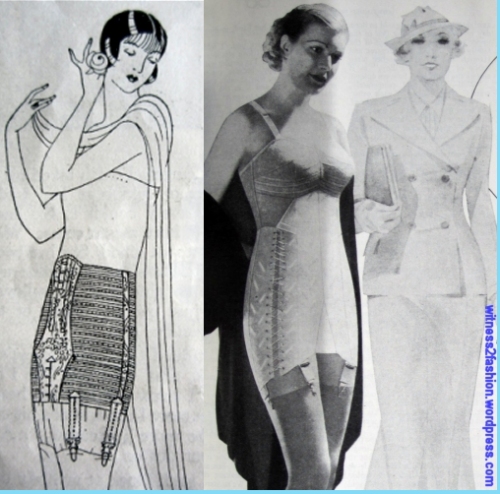
A Girdle from the 1920s and a Corset from the 1930s; when the suspender ran directly from the corset toward the knee (right) it was easy to get a run in the stocking.
If those traditional garters (correctly called “suspenders” by the British) weren’t long enough, or you were tall, nylon (and rayon) stockings often “popped” at the knee when you knelt down. I remember coming out of church with my entire knee bulging out of my nylon stocking in the early 60s.
This 1924 ad for Onyx Silk Stockings claims that other silk stockings, although naturally more elastic than rayon, popped at the knee, too. “Bending the knee like this puts a heavy strain on any silk stocking.”
“Costly runs:” as discussed in my “Living on $18 a Week” post, women with white collar jobs were expected to wear stockings to work, but stockings were fragile and a constant drain on their budget. (The Great Depression made this problem quite serious. In 2014 it’s widely reported that your chance of getting a job interview is better if you already have a job; in the 1930s, a person who was unemployed long enough to start looking shabby was much less likely to get the same kind of job as the one she had lost.)
I was surprised to find this advertisement for Holeproof Knee-Highs in The Ladies’ Home Journal, July 1936. “Most good hosiery counters now feature the original Knee-High by Holeproof. In Chiffon, Service, or Dancing Sheer. See it during National Holeproof Knee-High Week, June 13-20.”
[As the writers of Third Rock from the Sun realized, women like me always regarded our knee high stockings as rather embarrassing. There’s plenty of evidence that a woman slowly removing her stockings can be quite erotic, but slowly removing my knee length sox – or support pantyhose, for that matter – is the opposite of seductive.]
Nevertheless, with the long dresses of the 1930s, knee length stockings made sense. When you were standing, the tops wouldn’t show. (Although I don’t think many women flaunted them as they do in the top photo below!) Stockings that never had to bear the strain of being stretched between a metal stocking clasp and a girdle were likely to last much longer. And garters of any kind were not necessary with the new Knee-High.
The development of Lastex – thin threads of rubber encased in fabric – revolutionized undergarments after 1931, and made a self-supporting knee high stocking possible.
“. . . Gives the knee-freedom of rolled hosiery in a smartly styled way. . . The self-supporting Holeproof Knee-High. . . . No more garter runs. . . this revolutionary new-type stocking eliminates knee-strain and garter pull. You can bend, twist or kneel without straining your sheerest chiffons. No garter bumps to show ‘neath sheer frocks.”  “Air-conditioned knees. If you pursue an active life you’ll find cool comfort in Holeproof Knee-High . . . and amazing economy! With garter runs eliminated, 3 pairs outwear 4 or 5 of long hose. Knit-in ‘Lastex’ garter top keeps stocking trimly in place.”
“Air-conditioned knees. If you pursue an active life you’ll find cool comfort in Holeproof Knee-High . . . and amazing economy! With garter runs eliminated, 3 pairs outwear 4 or 5 of long hose. Knit-in ‘Lastex’ garter top keeps stocking trimly in place.” “Full-fashioned silk hosiery (knee-length) with knit-in ‘Lastex’ garters.”
“Full-fashioned silk hosiery (knee-length) with knit-in ‘Lastex’ garters.”
Also Introduced in the 1930s: Peds
The fine print says “elastic edge” and “non-slip heel.” “Wear PEDS for the beach, sportswear, street wear, around the home.” Peds, which could be worn with shoes while you were cleaning house, etc., were also suggested not just as a replacement for stockings, but as stocking savers: “If wearing stockings, use Peds under or over them! Stops wear and mending.” If your problem was that your toenails wore through your stockings, this might actually work.
Update, 6/29/16: There’s a great post with lots of photos of 1920s rolled stockings with bathing suits at the Frontline Flapper Vintage blog. Click here.




